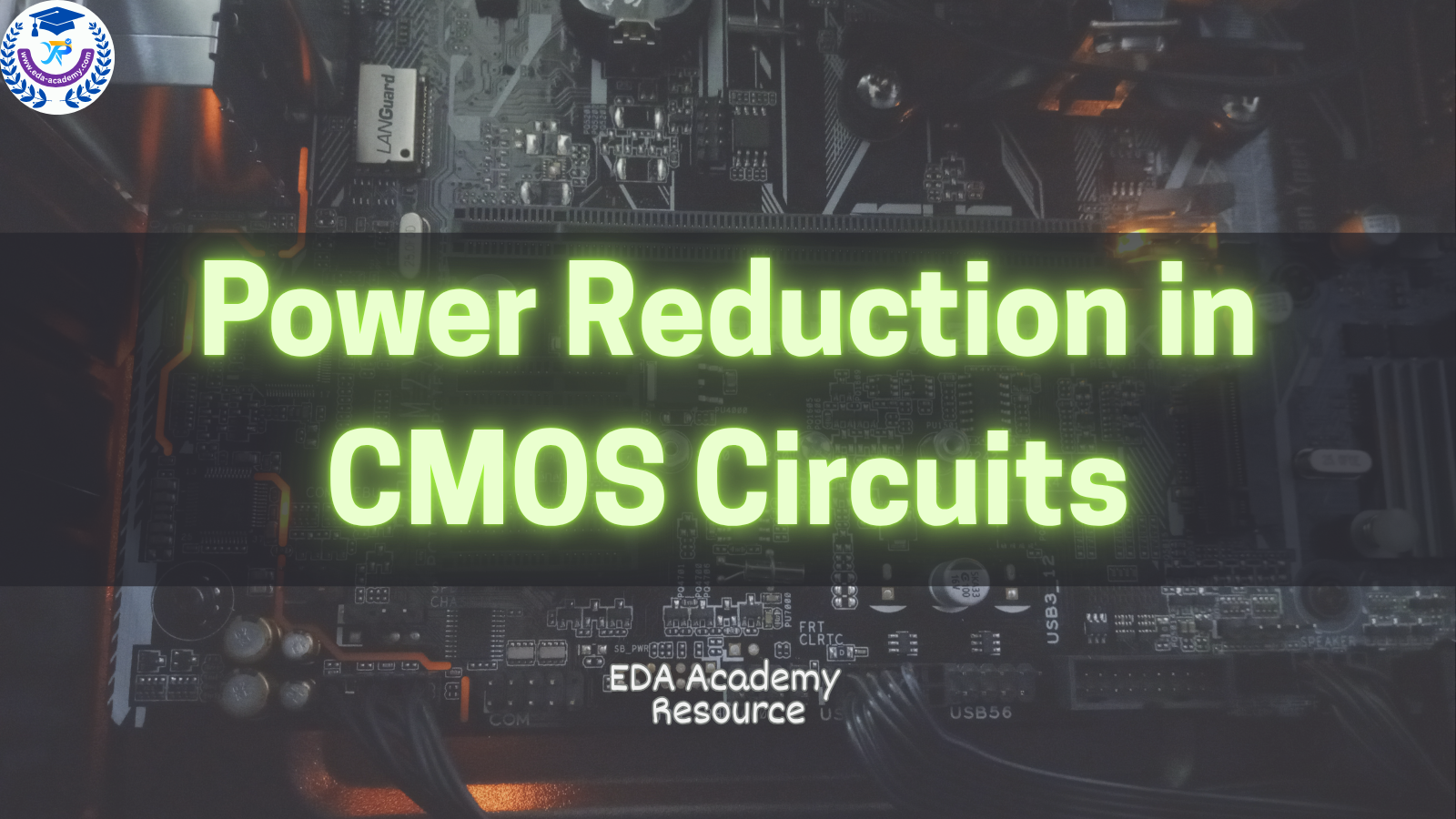Resource:
Power Reduction in CMOS Circuits (English)
Power reduction in CMOS circuits is a fundamental requirement for modern integrated systems, especially in power-sensitive and thermally constrained environments. Here explores the key sources of power dissipation—dynamic and leakage power—and examines how these challenges evolve with technology scaling. A range of reduction strategies is introduced, including dynamic voltage and frequency scaling (DVFS), operand isolation, clock gating, and power gating. Techniques are mapped across the design flow from architectural to physical levels, providing a comprehensive understanding of how to manage energy efficiency without compromising timing or functionality in advanced digital designs.
Purchase
Our course syllabus is regularly updated to reflect the latest advancements and best practices in the field. For individually purchased courses or resources with lifetime access, students can always access the content and receive updates for free. For members, all member-free courses and resources — including future updates — are accessible during the active subscription period. This ensures that both lifetime purchasers and active members can benefit from the most relevant and up-to-date content.
Created by EDA Academy
English
Last updated June 2025

Resource: Power Reduction in CMOS Circuits (English)
OR
USD $99.9
-60%Today
$39.9
One-time Purchase
& Lifetime Access
What you will get:
1.3 Hours of Immersive, High-Quality Video Lessons
Professionally produced and delivered by our expert team, covering core concepts and practical demonstrations, with step-by-step explanations and real-life examples to help you efficiently absorb knowledge and apply it immediately in a short time.
Certificate of completion
Upon successful completion of the course, you will receive an official certificate issued by EDA Academy, adding value to your resume and career development.
Access on mobile and computer
The course can be viewed anytime on mobile phones, tablets, and computers, allowing you to learn easily whether at the office, at home, or on the go.
Ongoing support from EDA Academy
After the course ends, you will continue to receive ongoing support from our team to help you consolidate knowledge and solve practical problems.
Further learning plan
Provides you with follow-up learning paths and recommended resources, enabling you to continue improving your skills and expanding your career development based on what you have learned.
Resource Catalogue
Description
Power dissipation has become one of the most critical constraints in digital CMOS design due to the growing demand for energy-efficient and high-performance systems. It is primarily categorized into two components: dynamic power and leakage power. Dynamic power is linked to the charging and discharging of load capacitances during logic transitions and is heavily influenced by switching activity, clock frequency, supply voltage, and capacitance. Leakage power, often referred to as static power, stems from subthreshold conduction, gate leakage, and junction leakage—effects that become more prominent with deep submicron technology scaling. As devices continue to shrink and integration density increases, these two power components pose substantial challenges to both functionality and thermal integrity.
Reducing dynamic power involves a multi-level approach across the digital design flow. At the architectural stage, optimizing the overall logic structure and reducing unnecessary switching activity are key. Data-path control and state machine simplification can help eliminate redundant transitions. Moving to the register-transfer level (RTL), techniques like operand isolation prevent unnecessary logic evaluation, while clock gating ensures that clock signals are only delivered to active modules. These methods are both widely supported by synthesis tools and highly effective in reducing active power consumption in synchronous designs. At the synthesis stage, further reduction is achieved through technology mapping and optimization of signal activity. Techniques such as logic restructuring and register retiming can shift transitions away from critical paths and lower power without affecting performance targets.
Physical design introduces additional opportunities for power optimization. During place-and-route, activity-driven placement helps minimize dynamic switching in densely connected logic blocks. Clock tree synthesis can be guided to distribute the clock signal efficiently, reducing both power and skew. Dynamic Voltage and Frequency Scaling (DVFS) plays an essential role in post-silicon runtime power control, where operating voltage and frequency are dynamically adjusted to match workload requirements. DVFS is particularly effective in system-on-chip (SoC) environments, where performance needs fluctuate and idle periods can be leveraged to lower power draw.
Managing leakage power requires targeted approaches that take into account static current paths and device-level characteristics. Multi-threshold voltage (multi-Vt) optimization enables designers to use high-threshold devices in non-timing-critical paths, significantly reducing leakage while maintaining timing closure. Substrate biasing, or back-biasing, adjusts the threshold voltage of transistors dynamically to suppress leakage during low activity or idle modes. Power gating is one of the most effective methods for completely cutting off power to inactive blocks, especially when combined with State Retention Power Gating (SRPG), which retains the logic state during shutdown. These techniques are increasingly crucial for achieving low standby power in always-on and battery-operated systems.
Achieving optimal power efficiency requires careful consideration of trade-offs. Each power-saving technique impacts area, timing, and complexity to varying degrees, and these must be balanced against power reduction goals. Evaluating return on investment (ROI) involves analyzing the cost-benefit ratio of each method in the context of specific design constraints and system-level requirements. When applied strategically and in combination, these methods enable the development of energy-efficient digital systems that meet stringent performance, thermal, and operational reliability targets. A deep understanding of power dissipation mechanisms and mitigation strategies is essential for delivering successful designs in advanced CMOS technologies.
We HATE spam. Your email address is 100% secure
The document will be emailed to you. Please check your Spam folder if it doesn’t appear in your inbox.
We HATE spam. Your email address is 100% secure
